Nausicaá and the Beating Heart of Boulonnais
Making a beeline for Nausicaá, Boulogne’s aquatic showstopper, Rhiannon Rees ends up discovering a deeply historic area tied to Britain and the sea
To some, Boulonnais is a mark on the map, a vague belt stretching roughly from Calais to Boulogne-sur-Mer. So close to England’s southern ports, it’s often treated as a thoroughfare by tourists who slice through its middle. But Boulonnais, as I recently learned, is so much more than a pit stop.
To start with, it’s quite literally the first point of contact for any ferry-goer or Channel Tunnel-voyager arriving in the north, and they should feel privileged to touch down here, of all places. Not only is this coastal stretch home to France’s largest fishing port and an abundance of seafood, it’s also saturated with fascinating stories – many speaking of a centuries-old relationship with England – from tales of lace smuggling to the Napoleonic and World Wars.
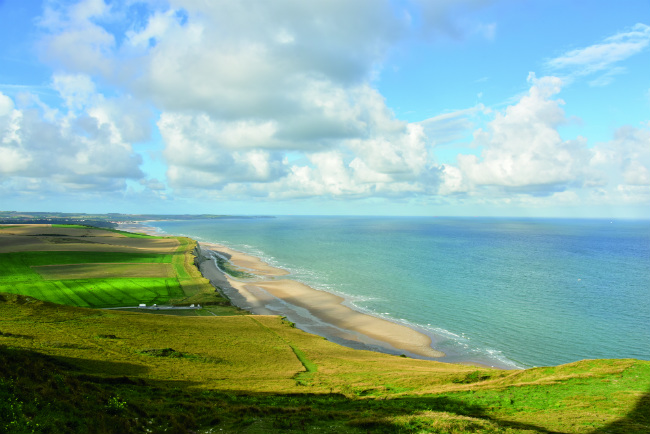
Wissant beach is a popular spot for kite-flying and surfing. Photo: Eric Desaunois
Boarding my Eurostar at London St. Pancras on a characteristically wet March morning, parapluie-wielding mother in tow, I was already drawing comparisons between my own rather soggy country and final destination. Admittedly, some things were a bit closer to home than expected. I thumbed between countries on my weather app, grimacing at the identical forecasts. C’est typique…
CONQUERORS, CANNONBALLS… AND CHEESE
After a smooth one-hour journey, we arrived punctually (something a little less familiar to Brits) at a blustery Calais-Fréthun, where we met our guide and began the 20-minute drive down to Boulogne-sur-Mer. The roads were quiet; the landscape vast. In Wimille, the skyline was broken by a tall structure with a rather familiar silhouette at its peak.
This was the famous Colonne de la Grande Armée, a towering 53-metre-tall monument crowned by a statue of Napoleon I. On a sunnier day, no doubt we’d have been in its shadow. “There’s an amusing story behind this column,” our guide said, pulling over so we could crane our necks for a closer look. Apparently, this monolith was first erected in the 19th century to celebrate Napoleon’s formidable England-bound army. But, as far as grand gestures go, fate had other plans. Not only did this invasion never actually happen, but to add insult to injury, a spate of German bombings in the Second World War caused so much damage that the monument had to be rebuilt – with one marked difference. This time, its figurehead was pointedly turned away from England (what with it being a newfound ally, and all). In fact, the stony-faced Napoleon now gazes out across Boulogne… albeit to govern, rather than conquer.
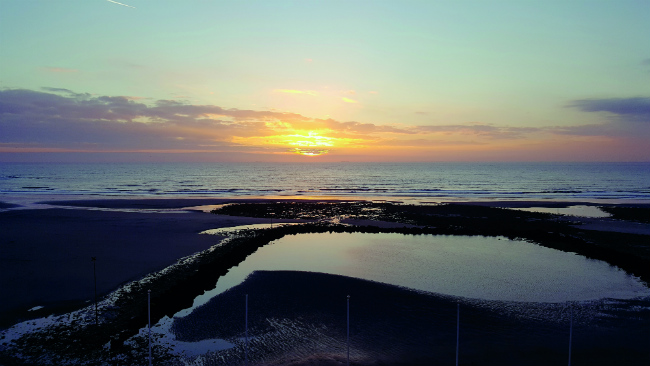
Watch the sun set from the glamorous Hôtel Atlantic. Photo: Rhiannon Rees
Leaving the Little Corporal behind, we had one more stop to make en route. Pausing at the lip of a grassy knoll overlooking the main town, we observed a quiet expanse of ocean peppered with a few small boats. It was a stunning panorama.
“You can see a few leisure boats,” our guide said, gesturing to the elegant specks on the horizon. “But we used to receive huge ferries from England as well.” I picked up on the wistfulness in his voice. “And there’s been a big impact, without them?” I ventured, imagining thousands of eager tourists spilling into Boulogne’s quay and hotels, bars and restaurants. Of course, he told me – when the ferries stopped docking here about ten years ago, instead travelling to Calais, the town was seen less as a tourist destination and more as a commercial hub.

A view of Boulogne-sur-Mer from the belfry. Photo: Rhiannon Rees
After all, Boulogne remains the country’s largest fishing port. Snaking along residential arteries into the town’s harbour, the sheer size of this industry became clear. At this somewhat sleepy time of day, the market stalls were closed and loading bays empty, save for the lingering smell of smoked and salty goods, but in the early hours around 10,000 workers toil over commercial production. It didn’t take much imagination to picture these enormous spaces heaving with lorries, crates and hauls of herring and huîtres. Come to the market at first light and you’ll be able to purchase fresh catches from the public-facing fishermen’s wives.
Heading next to Boulogne’s centre, we stepped back in time through one of the original gateways into the old town, where the scenery transformed into cafés and cobbled streets. Here we meandered to the town hall with its belfry tower – Boulogne’s oldest monument and a proud UNESCO World Heritage Site.
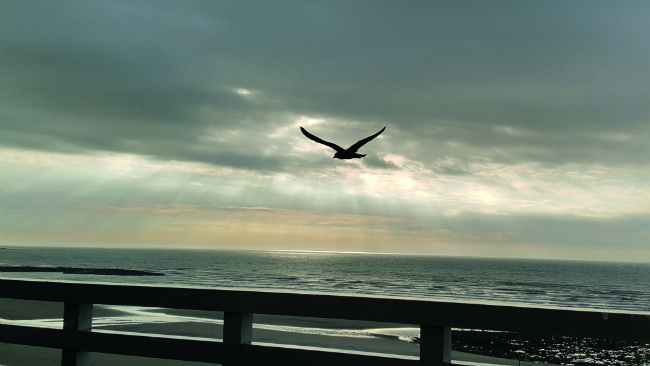
The view from the stylish Hotel Atlantic in Wimereux. Photo: Rhiannon Rees
While I stared up through the hole in the ceiling to the rafters above, marvelling at the idea of labourers pulling the mighty bell vertically to her station, our guide turned our attention to the assembly of spheres on the floor. “Cannonballs,” he laughed, “left generously by you!” These were relics from an unsuccessful siege by Henry VIII in 1544, and they weren’t the only things left behind by our infamous portly monarch.
When the siege dragged on for two months, Henry’s troops resorted to rationing bread, beer and cheddar. By combining all three, soldiers created a dish that went down in history as ‘Le Welch’: a cheesier, gooier version of Welsh rarebit (and, according to residents, much tastier), which you’ll find on most local menus.
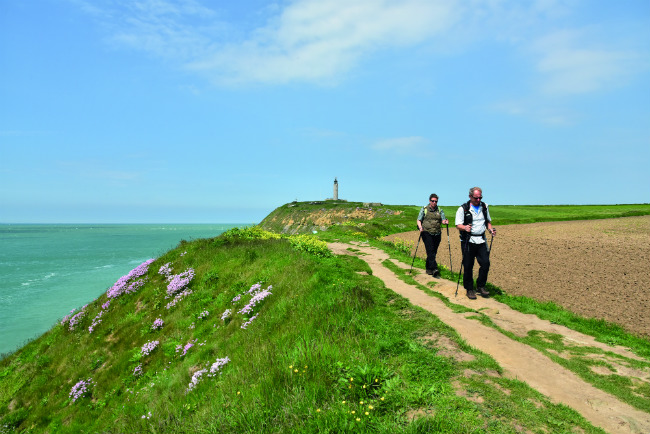
Walkers can stroll along the signposted trails of Terre des Deux Caps
Clinging on to thoughts of warming fromage, we made our steep and narrow ascent to the top of the belfry. Even on this grisly afternoon, the view was captivating. Slick with rain, red roofs and cobblestones gleamed. The Palais de Justice, where Napoleon demanded to stay during visits, dominated the tangle of buildings below. And, far in the distance, our old friend was visible atop his column, no doubt keeping a watchful eye on this pair of interlopers.
WINDOW TO THE OCEAN
A stone’s throw from its bustling quay, you’ll find Boulogne-sur-Mer’s biggest attraction. I have faint, blue-tinged childhood memories of visiting Nausicaá with my mother, but could never expect that two decades later we’d be donning hi-vis jackets and hard hats for a sneak peek of its expansion. Nausicaá draws in 600,000 guests annually and its new development, doubling the centre in size, is predicted to boost that figure to a whopping million. Ahead of its official unveiling this month, we glimpsed a rare insight into the amount of work behind such a feat.
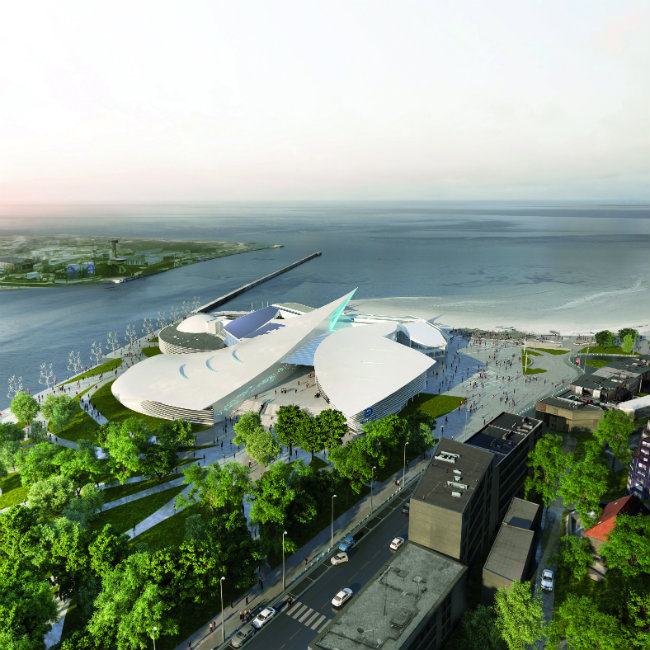
Aerial view of Nausicaá. Photo: Sophie et Jacques Rougerie
The new wing was labyrinthine and expertly designed. Ramps had been incorporated for disabled visitors and low-hanging cubbyholes promised extra adventure for children. We passed animals already acclimatising – luminous jellyfish with frothy undercarriages and eels threading through pipes – until we stopped before an enormous pane of glass being scrupulously polished by specialists.
On the other side, a few manta rays lapped the space before vanishing into the depths. This incredible tank is Nausicaá’s new flagship, a tropical marvel modelled on the eco-system of Malpelo island off the Colombian coast. Holding 10,000m3 of water (the equivalent of four Olympic swimming pools, which took an incredible six weeks to fill), it’s an enormous aquarium set for a population of 22,000 creatures, bringing Nausicaá’s total headcount to almost 60,000.
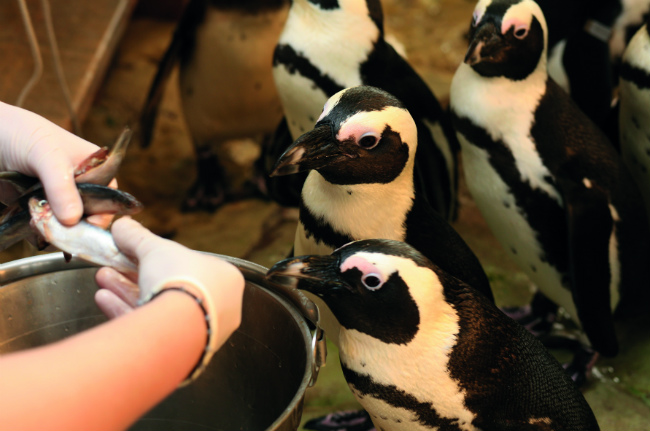
African penguins are a big hit at Nausicaá
Visitors can also look forward to an 18-metre glass tunnel, plunging them into a sub-nautical wonderland. There’s even a space outside the mega-tank for silent disco evenings – silent, of course, so the animals aren’t disturbed (although the awkward dance moves might be disturbing enough). And that’s not all: bringing Nausicaá up to date are a wealth of tech-savvy additions, including touch-screen displays around the tour and a unique app for guests to catch up on any information they may have missed during the day’s excitement.
Heads full of visions for the very near future, we decided to pay a nostalgic visit to the old exhibits. An array of animals can be seen here, including a rainbow’s worth of starfish, crabs, African penguins, sea lions and sharks, to name a few.
By far Nausicaá’s greatest assets, however, are its educational and conservational efforts, for which it has been awarded UNESCO ‘Centre of Excellence’ status. Alongside its roster of annual events to raise awareness about ecosystems and marine life, we saw glimpses of this forward-thinking approach in person. There was one especially poignant audiovisual display about the catastrophic effects of global warming and, in another exhibit, a latticed man-made structure pocketed with the beginnings of coral growth – groundbreaking steps towards breathing life back into the wild reefs. Truly, in a town famed for its fishing, it’s essential to address the delicate balance between man and nature.
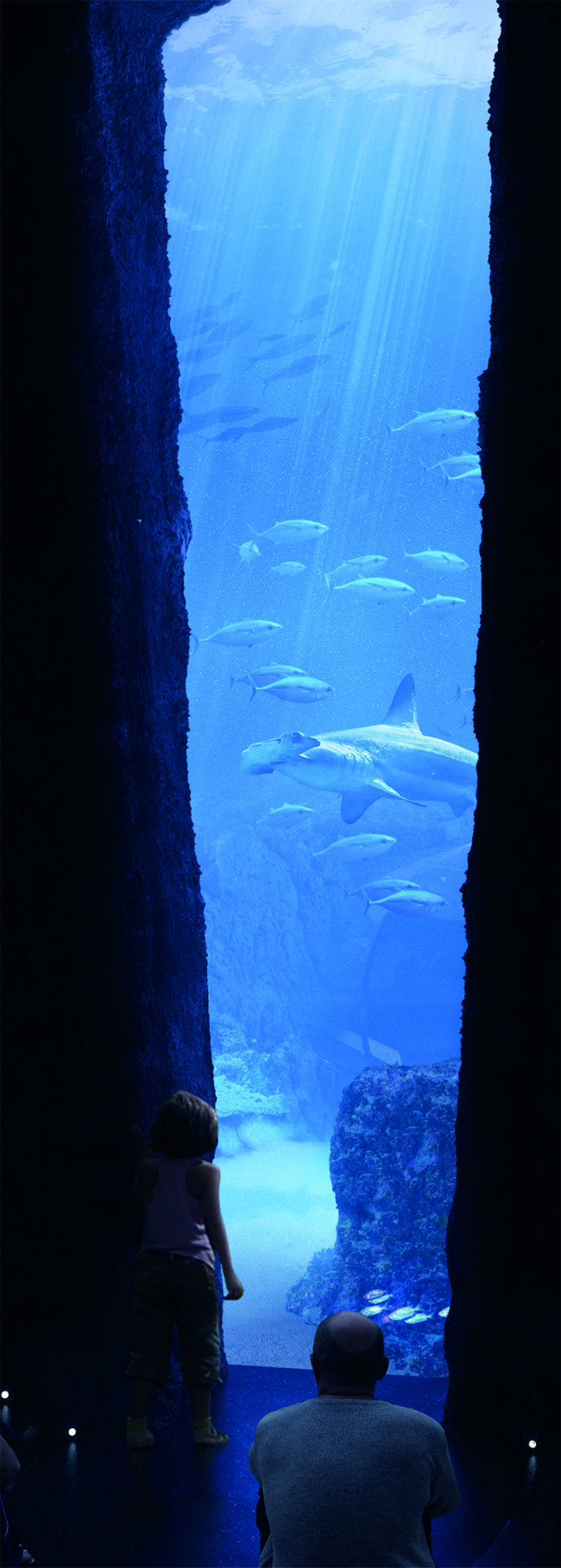
Hammerhead sharks are newcomers to Nausicaá. Photo: Sophie et Jacques Rougerie
BEYOND BOULOGNE
After stopping overnight in Wimereux, where we watched the setting sun turn the area’s Belle-Époque villas to gold, our way back to Calais was marked by the dramatic views of La Terre des Deux Caps. Split between two seaside cliffs (or caps), with Plage de Wissant in the middle and plenty of walking trails to speak of, this area of land is a hotspot for ramblers and beach-sport enthusiasts, not to mention a protected ‘Grand Site de France’.
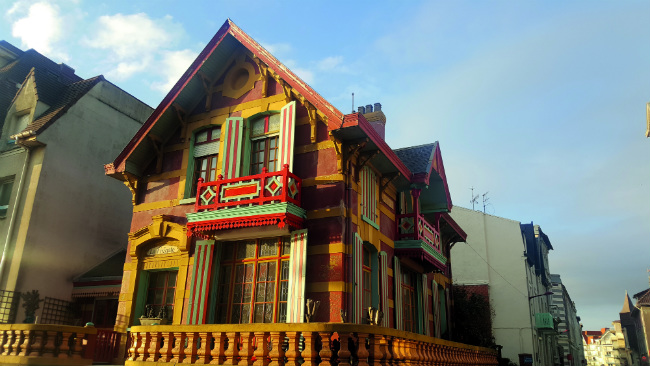
Belle-Époque architecture in Wimereux. Photo: Rhiannon Rees
Cap Gris-Nez is home to a newly-instated walkway, built in 2009 to reduce footfall damage, and as we strolled along its quiet length we noticed ruined walls beneath the hilly ridges – more vestiges of Henry VIII’s time here. Even today, his memory is persistent.
The pastoral approach to its sister Blanc-Nez, on the other hand, was pockmarked with shell craters from WWII and powdery white stuff either side of the path. We stooped to pinch the soft crumbs between our fingers. Chalk – the very same making up the famous White Cliffs of Dover, just visible in the blue distance. At the top of Blanc-Nez, the Dover Patrol obelisk saluted the naval heroes who kept these waters safe during the First World War, a poignant conclusion to our Opal Coast adventure.
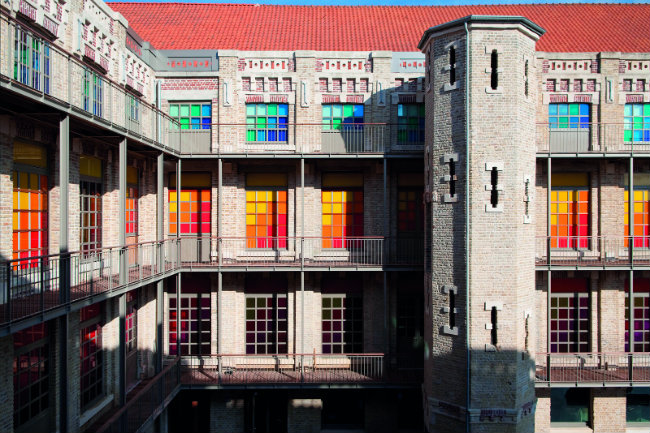
Cité de la dentelle et de la mode
Killing those precious final hours before our train home, we were treated to a special tour of the Calais Lace Museum. Patterned dresses and ladies’ fans glowed in the dim light. Touch screens and swatch books invited curious fingers. We pored over delicate cuts; leafed through floral sketches; watched an expert studiously looping natural and synthetic strings onto the machines. These industrial giants were first smuggled over from Nottingham in the early 19th century to avoid taxes, and the locals in Calais and Caudry have kept the industry alive ever since.
Never had I imagined the Anglo-French link to weave itself so deeply into the Boulonnais way of life. Peering closer at that oh-so underrated mark on the map, we had uncovered a genuine pearl by the sea.

At the lace museum. Photo: Rhiannon Rees
BOULONNAIS ESSENTIALS
GETTING THERE
From London St. Pancras, the Eurostar whisks travellers away to Calais-Fréthun in just one hour.
WHERE TO EAT
In Boulogne-sur-Mer, we tucked into the most delicious warm Maroilles cheese parcels at Restaurant de la Haute Ville opposite the cathedral, and enjoyed gourmet lunch and nautical ambience at L’Îlot Vert on the charming rue de Lille.
WHERE TO SLEEP
Rest your head at the recently renovated Hôtel Metropole in Boulogne or stop over in Wimereux’s stunning Hôtel Atlantic.
From France Today magazine
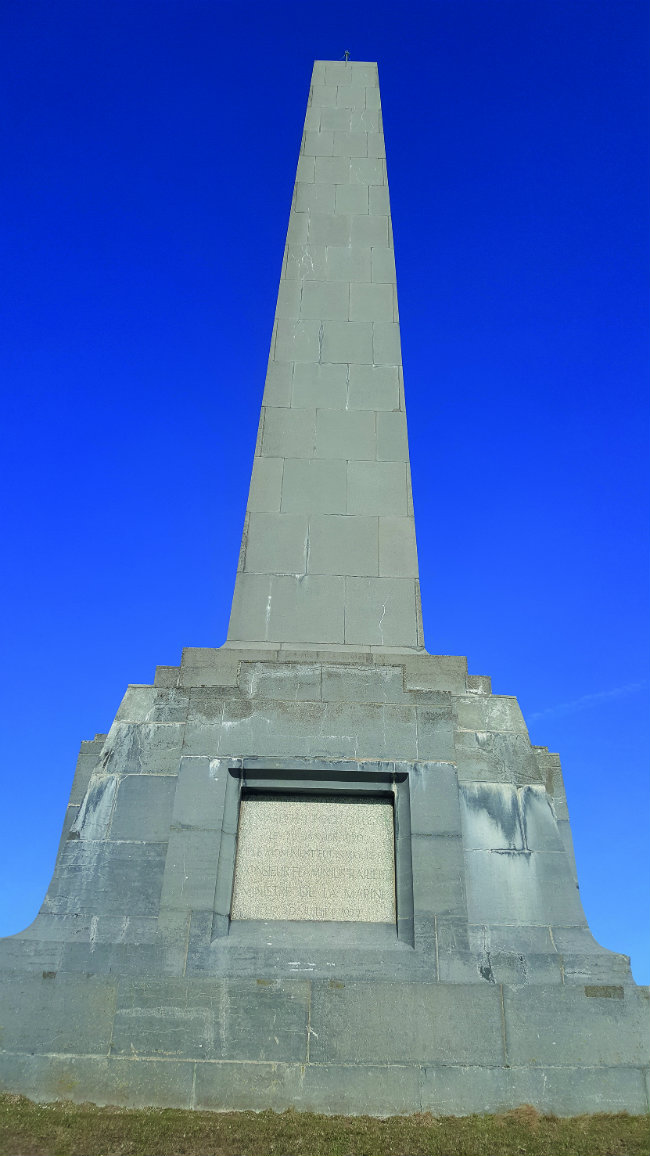
The Dover Patrol obelisk on Cap Blanc-Nez. Photo: Rhiannon Rees
Share to: Facebook Twitter LinkedIn Email
Leave a reply
Your email address will not be published. Required fields are marked *

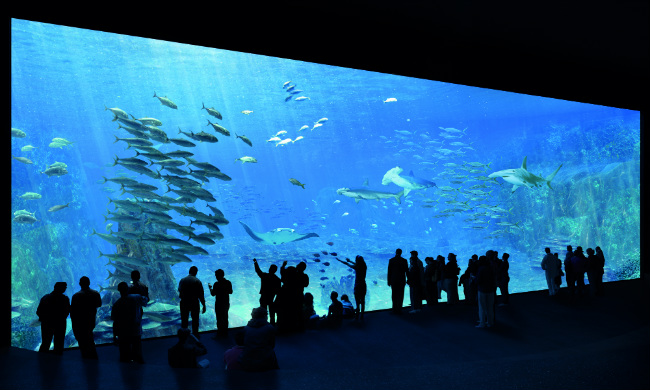




REPLY